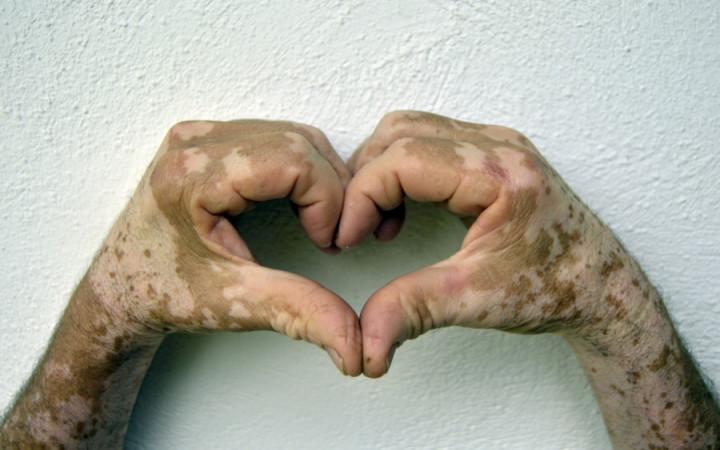Today’s Wonder of the Day was inspired by Valarie from Hyde Park , MA. Valarie Wonders, “what is Vitiligo” Thanks for WONDERing with us, Valarie!
How cool would it be to be a chameleon? Just imagine it. You sneak out of bed in the middle of the night and creep across the green Linoleum of the kitchen floor. You spy the cookie jar and plan your attack.
Just then you hear a noise. A parent is stirring! You quickly turn a lime color and blend in with the floor. Your mom doesn't see you when she surveys the kitchen. As soon as she returns to bed, you grab the cookies and make your way back to bed. Another successful chameleon mission completed!
Unfortunately, human skin simply doesn't work like that of a chameleon. The skin color we're born with is what we're stuck with…for the most part. If you have fair skin, a significant amount of time in the Sun can turn it golden brown or beet red. Sunburns and suntans don't last long, though. Eventually, your skin returns to its normal shade.
For some people, though, skin can change color and stay that way. People with a condition known as vitiligo (pronounced vit-uh-LIE-go) experience patches of skin that suddenly turn white, as if they've lost all pigmentation.
That's exactly what vitiligo is: a loss of skin pigment. When vitiligo occurs, white spots or entire patches appear on the skin, usually in an area that's often exposed to the Sun, such as the face, arms, legs, hands, and feet.
Vitiligo can affect people of any skin color and any age. Fortunately, it's not dangerous. It's not a form of cancer or infection. It's also not contagious. Because it affects appearance, though, it's still often very upsetting to those who suffer from it.
The color of your skin is determined by special cells known as melanocytes. These cells produce melanin, which is a pigment that protects your skin from the Sun and gives it its color. The more active your melanocytes are, the more melanin is produced and the darker your skin is.
When a person has vitiligo, certain melanocytes simply stop producing melanin. This causes the skin in those areas to turn white because of the absence of melanin. Vitiligo can affect small spots or large patches of skin. It can also affect hair, such as the eyelashes.
Doctors don't know for certain what causes vitiligo. Some believe it's an autoimmune disorder that causes the body's immune system to attack melanocytes. Others believe it's a genetic disorder. They point to evidence that vitiligo is more prevalent in families with a history of thyroid disease and diabetes.
Unfortunately, there's no cure for vitiligo. There are, however, a wide variety of treatments available that may help even out white patches to achieve a more consistent skin tone. What works for one person doesn't necessarily work for another, though, so doctors must often try a variety of treatments to learn what works best for each individual.
Over time, some white patches may go away on their own. Others might live with vitiligo for the rest of their lives, trying different treatments until they find one that works well for their particular skin condition.





